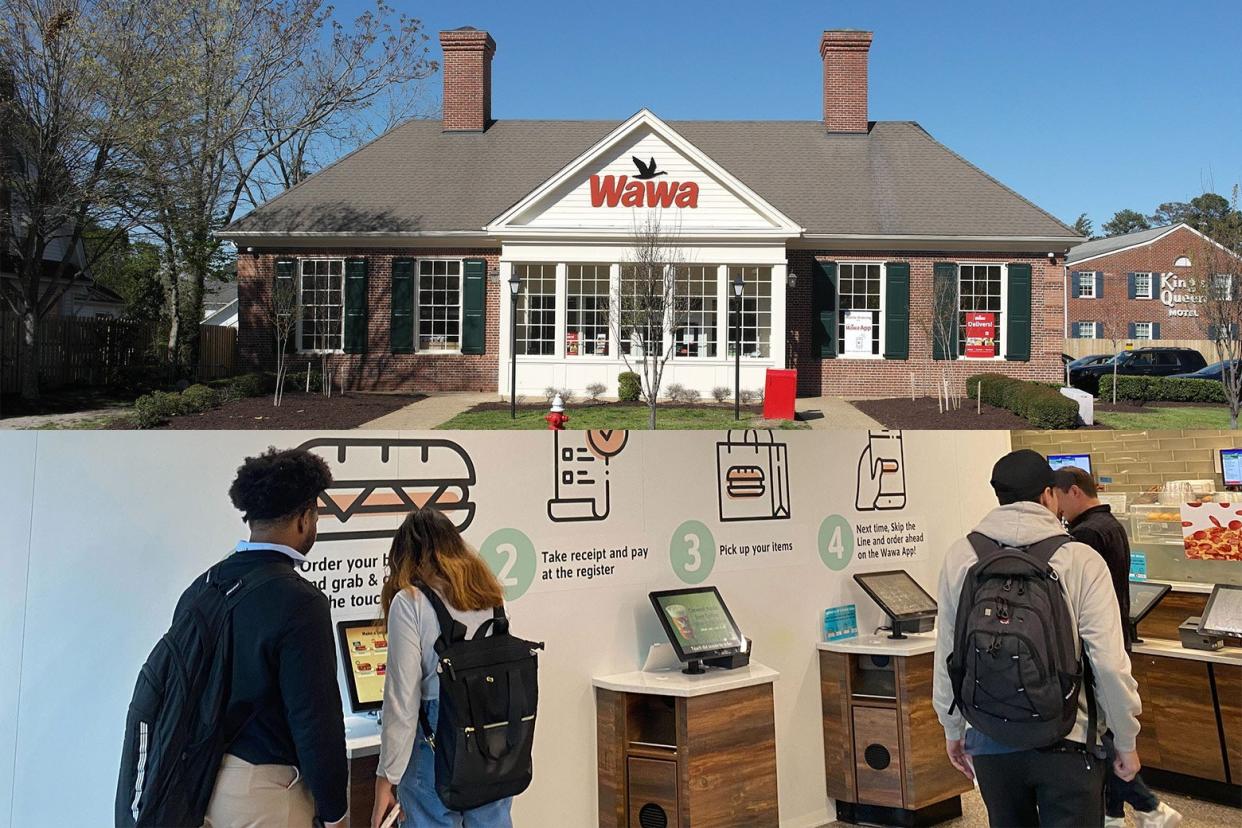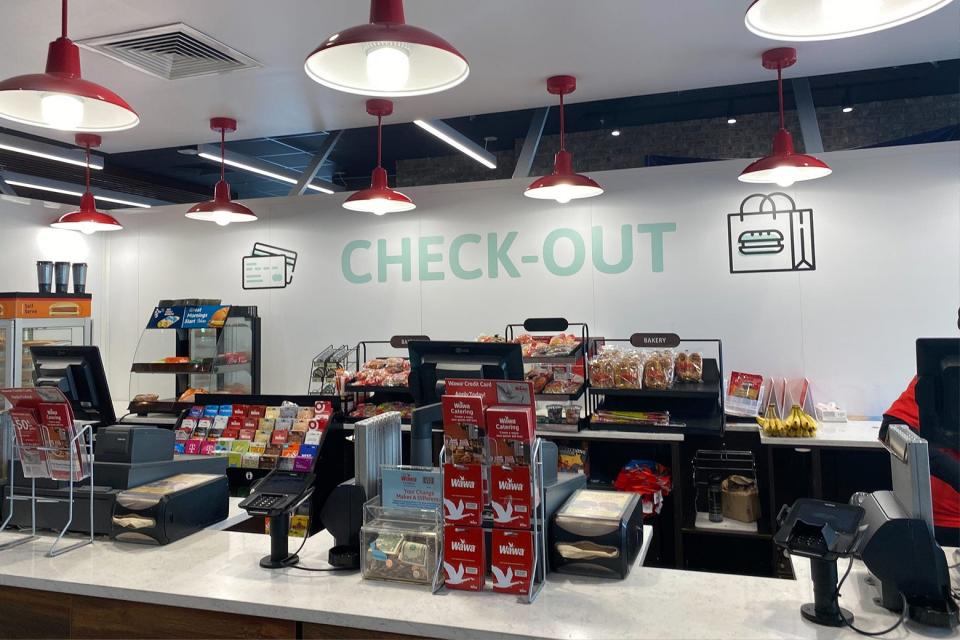First Coffee Shops, Then Fast Food, Now Beloved Regional Stores: Nowhere Is Safe From a Dreaded Design Trend

Walking into your favorite fast-food or fast-casual spot only to find that it has been given a futuristic face-lift has sadly become a common experience. Chances are you’ve noticed it: Almost every franchise that is still christening new stores now designs them to look like a cross between a New Age-y mobile-order pickup vector and a bare-bones modern apothecary, stripped of everything except neat rows of locked-up merchandise. Writer Kyle Chayka dubbed this design intention “AirSpace” for the Verge in 2016, describing the process of digital platforms making aesthetics globally accessible, resulting in every local artisanal coffee shop appearing like any other of its kind across the country. A similar kind of homogenization has taken hold in retail—earlier this year, Grub Street coined the term “shoppy shops” to describe the small businesses that all look the same and sell the same expensive, trendy brands of consumer packaged goods in every major city. Even Taco Bell isn’t safe from these so-called upgrades; it always feels disappointing when you pass a Taco Bell that traded in its nod to “Mexican authenticity”—terracotta red and golden yellow colors, with that iconic roof and arch—for a sterile purple and gray on perfectly rectangular buildings, now outfitted with less dining space in favor of hydraulic lifts to serve more drive-thu patrons.
I’ve taken all of these changes in stride, but this trend has finally gone too far. Wawa, the East Coast chain of convenience stores known for its made-to-order foods and for being particularly beloved by Pennsylvanians, is the latest victim of minimalist antiseptic design. Introducing: dystopian-ass Wawa.
First I’m seeing of these dystopian ass Wawas wtf pic.twitter.com/UA0mLAEws4
— æon: DAYBREAK - Available NOW (@daveprimarily) September 20, 2023
The Wawa at 34th Street and Market Street, within the blocks of West Philadelphia that count as Drexel University’s campus, was celebrated as the biggest location in the city when it first opened in late 2018, until the company opened an even bigger one mere months later. But if you walk in today, what you will find is nearly unrecognizable as a Wawa. Frankly disturbed by the images of the store shared online by photographer/producer David McDowell (a fellow Philly native), I decided to go witness the horror for myself on a recent visit back home.
What used to be an open, welcoming store—filled with stands stocked with yogurt and fruits, rows of chips, and walls of beverages—has been shrunk down to a boxy room partitioned off from the rest of the store. Instead of grabbing the goods yourself, customers must now use the touchpads designated for made-to-order food to also “shop the store.” There’s still a hot coffee station, but if you want a bottle of water or candy bar to go with your lunch, you have to order it with your sandwich instead of just picking it up yourself. And, as if that weren’t bizarre enough, even the typography used in the store’s signage and decor has changed: What used to be a signature homey, thick typeface is now the thin, minimalist sans-serif that is so dully common today. What was once warm and comforting is now cloaked in the muted grays and blues of our digital era. To the unknowing customer, it may just look blandly inoffensive—“so severely inoffensive, you could be anywhere,” is how I would describe this aesthetic’s aim—like an airport or a hospital waiting room. But to the Wawa-heads of the world, it’s a downright travesty.

I’m only mildly exaggerating when I say that eastern Pennsylvanians love Wawa—it’s hard to properly convey the fervor that inhabitants of the Philadelphian tri-state area have for the Northeastern staple. The chain first began back in the 1800s as a trusted dairy farm in the Delaware County area of Pennsylvania; when people pivoted from getting milk delivered to their homes to buying it in stores, Wawa opened its first convenience store. Since its Guernsey cow days, Wawa has, until now, managed to maintain that charm of a neighborhood family business, in turn inspiring a fierce loyalty in its customers. As a Philly native, I have fond memories of going to Wawa to get hoagies for lunch as a kid. It’s the place where you and your friends would go after school, where you would begin every road trip or jaunt down the shore, where you would say hi to your best friend’s older brother’s pal working behind the counter, where you might suck down a drink sold in partnership with your favorite home-team athletes.
It’s about the convenience and the (actually good) food, sure, but it’s also about the warm tones of the store, the jolly thick font, and the overwhelming nostalgia of the place. Wawa has always felt like it’s still that family-owned spot, regardless of the reality. (The chain is now Pennsylvania’s largest private company, with nearly $15 billion in revenue.) There’s comfort in seeing the stock of your favorite local brands—Tastykakes, Herr’s chips, Goldenberg’s Peanut Chews. There’s community in becoming acquainted and chatting with the same staff members every time you get your daily morning coffee. There’s hometown pride in shopping at Wawa, rather than someplace like its biggest rival, the western Pennsylvania staple known as Sheetz.
What’s happening to Wawa—bringing the chain into alignment with national brands that have zero sense of local specificity—ruins its charm. Streamlining the in-store experience to something digitized, all boiled down to the touchscreen, takes away the joy of talking to the staff, of surveying your options—seeing those Peanut Chews you forgot about but now want—and of customizing some items by chatting up employees. But, more importantly, these modern spacecrafts no longer feel like home. Wawa used to be a good representation of the Philly spirit—charmingly chaotic on the outside, homey on the inside—but not anymore. We are a lot of things, but cold, uniform, and sterile is not one of them.
Wawa didn’t respond to Slate’s request for comment about what’s behind this change, but a spokesperson told NBC that the idea for the new design, which currently only exists in this one test location, is a “test of a full-service Wawa shopping experience with all items purchased digitally.” Another Wawa spokesperson told the Philadelphia Inquirer that “this will allow busy customers to place their orders and get their purchases faster than ever—fulfilled by friendly Wawa associates.” But there’s a chance this could also be part of an anti-theft effort; a cashier allegedly said as much to McDowell, the user who posted that dystopian-ass Wawa photo that caught my attention.
But, whatever the reason, one thing is clear: Nowhere, neither national chain nor local staple, is safe from this trend, and it sucks. I doubt that anyone is looking for their McDonald’s or neighborhood bodega to be the sleekest eatery in their town. As a Slate colleague put it, who’s out here wishing for their Taco Bell to look like “you could perform brain surgery in its dining room”? All that Philadelphians want is for Wawa to bring back the chain’s delicious seasonal sweet potatoes—not to transform our hometown stores into Tesla showrooms.

